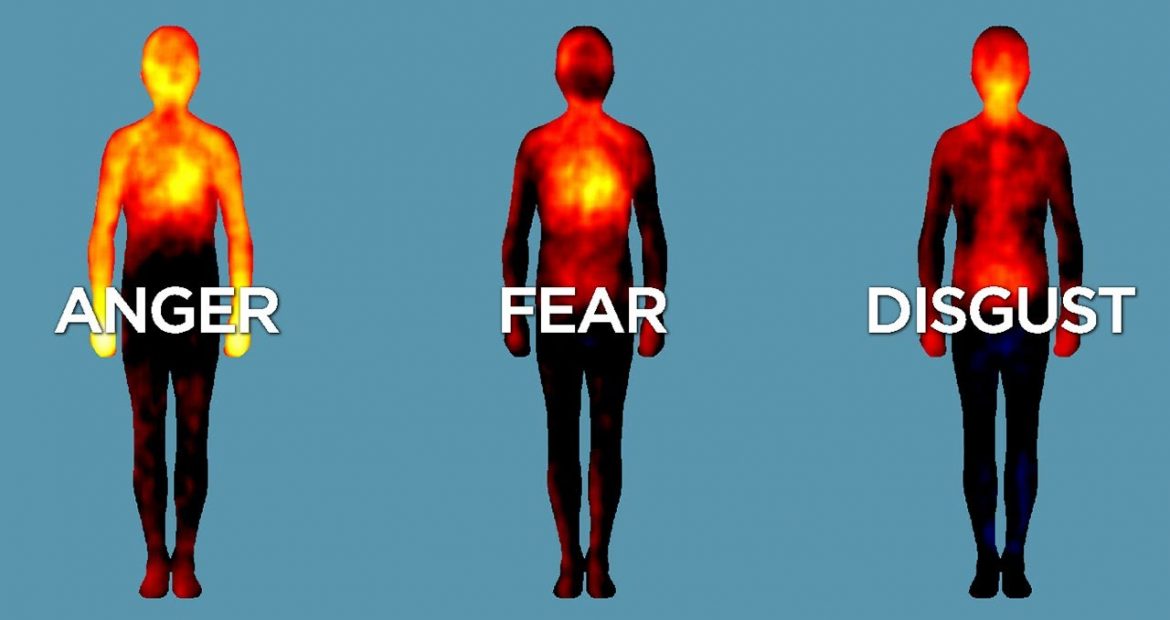"Self-awareness is a conscious knowing that cannot be quick fixed into sound bite learning."
At what point do we think we get it? The moment of enlightenment about who we are? The point that our understanding of how we are seen is crafted by truth and reality. At what point are we truly aware? Well, it seems that point is at best elusive and at worse a myth we tell ourselves that we have achieved.
Research conducted by Eurich Group examined what self-awareness really was, why we need it, and how we can increase it. The results may shock and surprise many in the coaching, self-help and therapeutic business. It appears only 10 to 15% of us are actually self aware. And that's not a lot of us.
If you are asking yourself, why is this interesting, just check out these statistics for life coaches ( Life Coaching ) .
- 71,000 life coaches based in 161 countries worldwide
- In 2018 there were 53,300 coaches
- Life coaching is the second fastest growing industry in the US
- The estimated global revenue from coaching in 2019 was $2.849 billion
- The coaching industry has a $1 billion value in the US
- A search for 'coaches' on LinkedIn brought in over 6.28 million results in 2020
This means a generous 56, 800 of these life coaches are not as aware and insightful as their clients may rightly or wrongfully believe them to be. Or if we look at it another way, these coaches believe themselves to be very self-aware when in fact they may not be. I know, awkward. If this is true then how skilled is this profession to enhance, dig deep and bring true awareness to their clients? How biased and judgy is the coaching advice, opinions and support given. As clients of coaches, what are the expectations on the coach's level of insight and awareness. What if they have effective internal awareness and poor external awareness. Or the other way round? How does that alter the exchange of mentoring and guidance?
How can one of the fastest growing industries be unaware how unaware they might be? What is the impact of this and as a generally unregulated industry, what is the criteria required to ensure those that coach, are not simply skilled at being and teaching introspective? Does it matter?
Identity Mind Traps make us unaware.
The study found that there are two distinct types of awareness- internal and external and that we flux between these levels of awareness. More than this, the study indicated 'that experience and power can hinder self-awareness, and that introspection doesn't always make you more self-aware." It appears the higher we climb on that ladder, the less our self and other awareness grows. Maybe we are looking inwards in the wrong way or for the wrong reasons?
How about with our leaders and CEO or C-suites? What if they are led to believe that introspection equals awareness and act accordingly. Misguidedly believing they have true insight, when in reality they have only scratched the surface of becoming aware.
The idea of an "identity mindtrap" ( Aware Leaders ) is something we can all fall into. The more we thrive the less we dive into our awareness. In the article on identity mindtraps and leaders, lack of real awareness can 'blind us to valuable personal-growth opportunities and how a more expansive view, grounded in the principles of adult development, can help us recognize our potential and improve the odds of seizing it. The results not only are personally beneficial-helping us lead with more ease and empathy and improving our ability to deal with complexity-but can also help our teams and organizations thrive in an uncertain, rapidly changing world."
Identity mind traps are the outcome of getting stuck in personal or professional development. The most common response to having any coaching or therapy is to build a new, stronger, happier identity. And then we feel safe. We like this version. It works for us. Others like it. We don't want to let it go.
We are naive to think even the most insightful of us is unaware of the impulsivity to protect our identity. Who hasn't found themselves "instinctively arguing that we are right, holding onto simple stories where we feature as heroes and others as villains, tribal-or polarizing-behaviour, and inflating our sense of personal agency while deflecting responsibility?"
Being aware is the ability to be in the moment and owning that moment, in all its discomfort.
Awareness is a conscious mindset, a state of emerging knowing that reads you, your actions and motivations. It is a deep self-analysis of the 'what and why' of each interaction and reaction between the interconnectedness we all experience with others. It is both jury and judge for all we believe.
Your public and private face (Internal and external awareness).
The Eurich research described internal self-awareness, as 'how clearly we see our own values, passions, aspirations, fit with our environment, reactions (including thoughts, feelings, behaviours, strengths, and weaknesses), and impact on others.'
They discovered that our level of internal self-awareness impacts on our happiness (jobs, relationship satisfaction, personal and social control). Low internal awareness is connected to unhappiness (anxiety, stress, and depression).
The more aware we are, on why we react, what we think, our emotional range and understand ourselves, the better we become on realising the impact we have on others. For many, coaching can bring some insight and skills to develop internal awareness. In fact, this is the area that coaching thrives in. The 'tell me more about myself' style of self-development.
There is another level of awareness that is far more difficult to master and that is external self-awareness. Our ability and capacity to correctly grasp how other people view us, including how they think, feel, react towards us. How they view us, and our strengths and weaknesses is a whole other ball game. External awareness can heighten a sense of true empathy, empower interconnectedness and communication, and allow us to see clearly from another perspective. We are seen as trustworthy, relatable, and confident, which in turn builds our own esteem and self-trust.
Let's think on this some more. How many people get coached and still feel discontent, keep searching and returning to find out more? Why doesn't it sustain our happy feeders? Maybe the longing for true contentment requires finding the gap in our awareness.
As the team at McKinsey Report note ( Aware Leaders ) identity mindtraps happen "instinctively, hidden from our awareness." Our self-misguidedness is a constant driver behind the scenes, navigating our way through unsafe emotional landscapes. "We might think we're "doing what it takes" or we're "standing up for ourselves" or any other self-justification technique we might choose to explain our behaviour as we subconsciously seek to manage the impressions that others have of us." It is here we discover our lack of authentic external awareness.
Mental traps of the unaware
The Eurich study called the different combinations of internal and external awareness introspectors, seekers, pleasers and aware. Indicators of the level of actual self-awareness across both divides. It is the gaps in our self-development, the levels across these divides, that creates the imbalances and shifts the focus and intent of what we do, despite our best intentions. Common examples are;
- When we believe we have deep insight and yet remain unaware how we dismiss others' emotions.
- When we have a personal breakthrough and believes that skills us to help everyone.
- When we have a story to tell to inspire and cannot see the ego that drives the need to share.
- When we want to connect yet feel superior.
- When we cannot recognise, we get critical when challenged.
- When we think we delivered a great performance and ignore the vibe in the room.
- When we ignore the data that tells us very few of us are aware.
- When we assume how others feel about us, without questioning the assumption.
- When we judge other's reactions to us.
These examples come from well-respected and introspective professionals who have a blind spot. A gap they fail to see. An imbalance between their internal and external awareness. It is subtle and small and is orchestrated by very human needs to be liked, respected and valued.
So, what are we doing wrong here? Exactly what is missing in the self-development arena that our growth of awareness of who we are and how we are seen by others is such a rare gem to find.
Perhaps the answer is making self-development too palatable. In talking to colleagues recently something was said that got me thinking. We were describing the Aware Group's mindset coaching tools, (to professionals that have done a fair amount of self-development and a would hazard a guess, believed they were self-aware). The tools have some theoretic information (the why), assessments and tasks (the how) and reflection journals and mindset meditations (the what) to build and challenge your internal and external awareness levels for growth.
The response we got was that having to learn the skill and be responsible for that learning was too hard. 'Isn't there a quicker or easier way to do it?"
And there we have it.
We want or have come to believe that developing a deeper consciousness should be easy. If not, well let's just stick with being introspective and carry on with our hidden biases. A higher level of knowing about ourselves and how we connect to others, the capacity to see how others really see us, comes with a level of complexity that many may give up on, or lose interest in discovering.
Mental traps of the unaware
At the Aware Group we have focused on eight internal and external levels of awareness, requiring shifts at a cognitive, emotional, spiritual, work and social level. It requires depth in resilience, openness, control and self-reliance. Self-awareness is a conscious knowing that cannot be quick fixed into sound bite learning. Awareness is for the coaches that seek their own growth to enlighten their authenticity and challenge them out of the identity mind trap they might be resting in. Self-awareness is for the highly self-motivated that get excited by the discovery of self and are fearless to be challenged to find that moment of aware.
For me, I am enjoying discovering where my gaps are and doing the grit work to find my blind spots. My aim? Maybe one day I will find myself in that top 10 to 15% of truly self-aware people. And then ask myself what am I next?
The future self is for the fearless of getting aware.
Sarah Godfrey is a psychologist and mindset coach, director and business owner, board co-chair and co-founder of Aware.




 We may wonder the use of such research, however understanding how emotions effect our body can help in the development of diagnostic and treatment options. It allows us a greater understanding of the psychosomatic responses and the physical impact of negative or positive emotional feelings on our well-being.
We may wonder the use of such research, however understanding how emotions effect our body can help in the development of diagnostic and treatment options. It allows us a greater understanding of the psychosomatic responses and the physical impact of negative or positive emotional feelings on our well-being. The emotional impact on the structure of tears reshaped how we understood (at a micro-level) emotional influences on our biology. Rose-Lynn Fisher’s 2010 project
The emotional impact on the structure of tears reshaped how we understood (at a micro-level) emotional influences on our biology. Rose-Lynn Fisher’s 2010 project 
 Mikkers explained, “It’s hard to say if the physiology described in science is actually seen when a tear is crystallizing under a microscope, or if the emotional waves and state of the person is influencing the way the tear is shaping when crystallizing.”
Mikkers explained, “It’s hard to say if the physiology described in science is actually seen when a tear is crystallizing under a microscope, or if the emotional waves and state of the person is influencing the way the tear is shaping when crystallizing.”

 Caregivers.
Caregivers.
